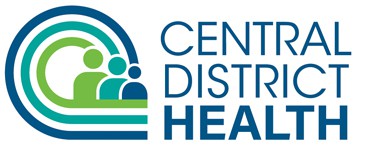The Massachusetts Department of Public Health and the Centers for Disease Control and Prevention confirmed a case of monkeypox in the United States infected with a West African strain of the virus. Cases of monkeypox have previously been identified in travelers from, or residents of, West African or Central African countries where monkeypox is endemic. Idaho public health officials are asking clinicians to be vigilant to the characteristic rash associated with monkeypox.
Suspicion for monkeypox should be heightened if the rash occurs in people who
1. Traveled to countries with recently confirmed cases of monkeypox,
2. report having had contact with a person or people who have a similar appearing rash or received a diagnosis of confirmed or suspected monkeypox, or
3. is a man who regularly has close or intimate in-person contact with other men, including those met through an online website, digital application (“app”), or at a bar or party.
Lesions may be disseminated or located on the genital or perianal area alone. Some patients may present with proctitis, and their illness could be clinically confused with a sexually transmitted infection (STI) like syphilis or herpes, or with varicella zoster virus infection.
Recommendations for Clinicians
- Consider monkeypox as a possible diagnosis in patients with a rash that could be consistent with monkeypox, especially those with a recent travel history to a country where monkeypox has been reported. The rash associated with monkeypox involves vesicles or pustules that are deep-seated, firm or hard, and well-circumscribed; the lesions may umbilicate or become confluent and progress over time to scabs. Presenting symptoms typically include fever, chills, the distinctive rash, or new lymphadenopathy; however, onset of perianal or genital lesions in the absence of subjective fever has been reported.
- Clinicians should report suspected monkeypox infections to the Idaho Department of Health and Welfare (DHW), Epidemiology Section at 208-334- 5939 or Central District Health at 208-3278625.
o The DHW Bureau of Laboratories can be contacted at 208-334-0517 for guidance on clinical sample submission for orthopoxvirus testing.
Infection Prevention & Control
Information on infection prevention and control in healthcare settings is provided on the CDC website: Infection Control: Hospital | Monkeypox | Poxvirus | CDC. CDC is currently reviewing this information to consider the need for updates.
A person is considered infectious from the onset of symptoms and is presumed to remain infectious until lesions have crusted, those crusts have separated, and a fresh layer of healthy skin has formed underneath.
The average incubation period for symptom onset is 5–13 days. Human-to-human transmission occurs through large respiratory droplets and by direct contact with body fluids or lesion material. It is currently believed that direct contact or prolonged contact within a few feet is required for transmission. Indirect contact with lesion material through fomites has also been documented. Animal-to-human transmission may occur through a bite or scratch, preparation of wild game, and direct or indirect contact with body fluids or lesion material.
Treatment
There is no specific treatment for monkeypox virus infection, although antivirals developed for use in patients with smallpox may prove beneficial1. People with direct contact (e.g., exposure to the skin, crusts, bodily fluids, or other materials) or indirect contact (e.g., presence within a six-foot radius in the absence of an N95 or filtering respirator for ≥3 hours) with a patient with monkeypox should be monitored by health departments; depending on their level of risk, some persons may be candidates for post- exposure prophylaxis with smallpox vaccine under an Investigational New Drug protocol after consultation with public health authorities.
Monkeypox disease symptoms always involve the characteristic rash, regardless of whether there is disseminated rash. Historically, the rash has been preceded by a prodrome including fever, lymphadenopathy, and often other non-specific symptoms such as malaise, headache, and muscle aches. In the most recent reported cases, prodromal symptoms may not have always occurred.
For More Information
CDC has a webpage for resources associated with current Monkeypox response: https://www.cdc.gov/poxvirus/monkeypox/outbreak/current.html
Contact the DHW Epidemiology Section at 208-334-5939 or Central District Health at 208-327-8625 if you have any questions or suspect a patient may have monkeypox.
CDC Poxvirus and Rabies Branch: poxvirus@cdc.gov or for issues that cannot be resolved through emails, CDC’s 24/7 Emergency Operations Center (EOC): 770-488- 7100 or CDC-INFO (1-800-232-4636)
References and Resources
1 Antivirals
Clinical Recognition of Monkeypox

